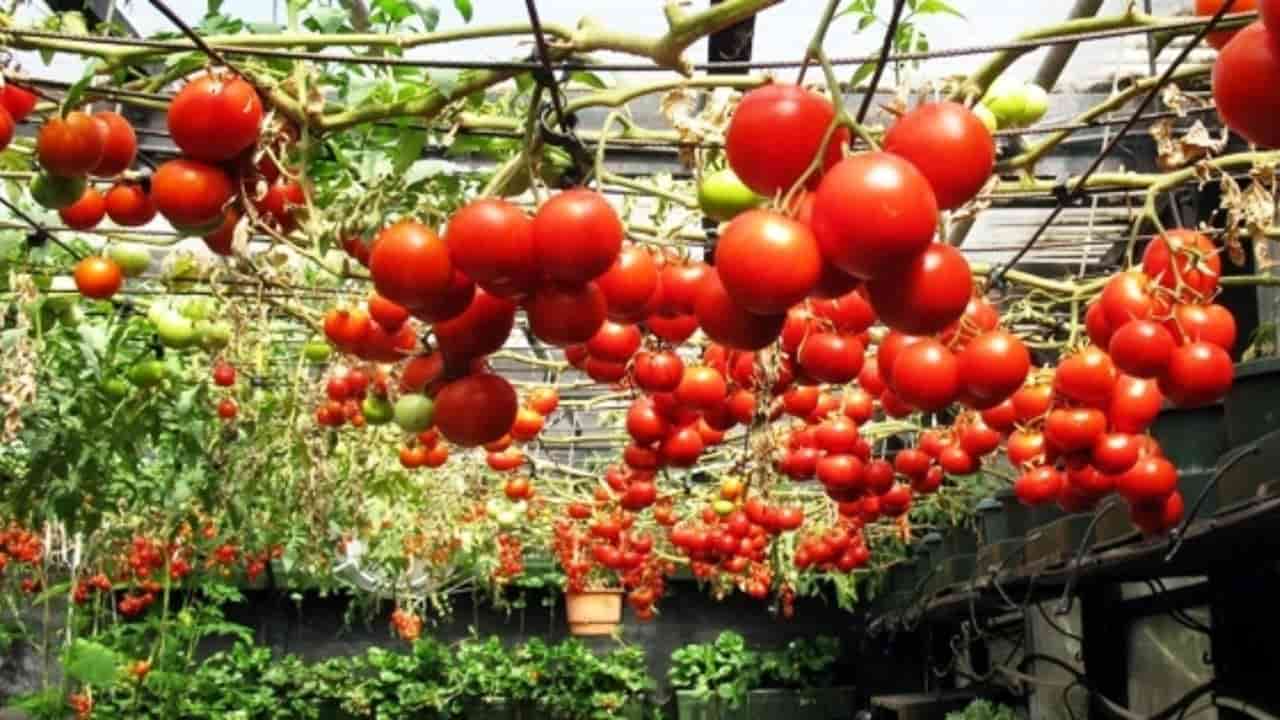
The practice of growing tomatoes upside down dates back more than ten years. In most cases, planting upright is the best way to grow tomatoes, but with a little know-how, it’s possible to grow tomatoes upside down.

Hanging tomato planters are most useful when garden space or sunlight is limited. Everything you need to know to build an inverted tomato planter and cultivate tomatoes in this unusual container is provided here.
Growing an upside-down tomato in the right place
Before planting an upside-down tomato, first make sure you have a suitable place to hang it. Consider the total weight of the planter and the available sunlight.
Remember the weight
The upside-down tomato planter is very heavy. A plant loaded with pot, moist soil, and fruit can easily weigh more than 50 pounds. Stable hanging equipment and a secure structure to mount the equipment are essential. If wind is an issue in your area, try hanging the container in a location protected from the wind.
Sunlight
Upside-down tomato planters are often hung on the roof of a house or balcony. These are reliable locations for hanging bulky containers, but one important component can be missing i.e. sunlight. Tomato plants, whether grown in the garden or in containers, require at least 8 hours of direct sunlight per day before they bear fruit. Porch roofs, houses, and nearby trees can cast shadows on hanging containers. Choose your growing location after analyzing how sunlight and shade will affect your space throughout the day.
How to make an upside-down tomato planter
1. Gather the materials.
You’ll need a 5-gallon bucket with a sturdy handle and lid, a saw attachment to drill 2-inch holes, and potting soil (not garden soil, as it’s too heavy and doesn’t drain well). ) and two sheets of newspaper.
2. Select suitable tomato plants.
Choose small-fruited tomato varieties such as cherry tomatoes, grape tomatoes, pear tomatoes, and cassis tomatoes. Roma, Beefsteak and Slicer varieties produce fruit that is too heavy for trailing tomato plant branches. Varieties with small fruits include “Super Sweet 100,” “Sungold,” “Jasper,” “Jolly,” and “Valentine.”
3. Make a planting hole.
Use the drill and lid, a saw attachment to drill 2-inch wide hole in the bottom of the bucket.
4. Add soil and water.
With the help of the two layers of newspaper, cover the planting hole. Fill a bucket about three-quarters full with potting soil, water thoroughly, and cover the bucket with a lid.
5. Prepare tomato seedlings.
Remove the tomato seedling from the growing container and carefully wrap the root ball with a layer of newspaper. The newspaper will protect the root ball as you insert it into the hole in the bottom of the bucket.
6. Plant the seedlings.
Set the bucket aside so you can reach the planting hole. To create space for the root ball of the seedling, gently puncture holes in the newspaper that cover the planting hole and remove any excess soil. Place the seedling in the planting hole.
7. Hang the planter.
Hang the tomato planter upside down on a sturdy surface that can support its full weight. Remove the lid as needed or leave it alone and remove the lid to water as needed.
Upside-Down Tomato Care Tips
As with other container plants, water your upside-down tomato planter. Check soil moisture daily. Once the top of the soil is dry, water the container until water runs out from the bottom of the planter. Keep the soil moist but not wet. When watering, soil may flow out of the container. If necessary, refill the container with fresh potting soil to replace lost soil. Harvest tomatoes when they are ripe to reduce stress on drooping branches.
